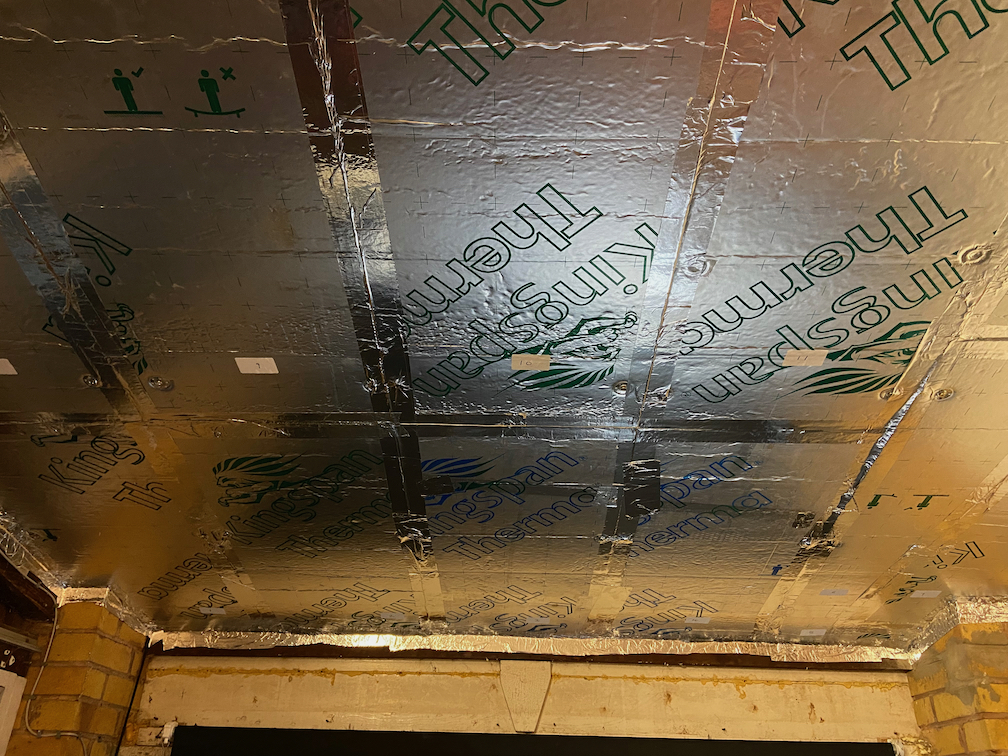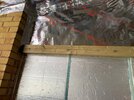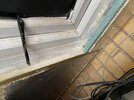Hi,
First time posting on here as I'm not sure what to do next with a garden store that we have at the back of the house.
When we bought the house back at the start of 2019, we were told this room was a "garden store". The bloke that we bought the house from, used it to fix up his motorbikes. My aim was to use it as an office and a sort of (for lack of a better word) "man cave".
Here is what it looked like when we moved in:
Its a nice space (about 12m squared), but the roof is corrugated plastic, the wall to the right of the picture is plastic slats and there was loose bits of wood around the window.
So I attempted to brick up around the window. It ended up ok, albeit a bit messy. Not too bad at a first attempt of brick work. I made sure that I placed metals brackets in the cement and screwed into the wall and window frame. Everything is now very solid and has been sitting there nicely for a couple of years.
Heres what it looked like after fitting a blind and chucking in an Ikea desk:
I've also insulated the roof with Kingspan. I was worried that I might get condensation problems, but fingers crossed, I haven't had any condensation issues since I installed the insulation last summer:
I got a little water ingress from the block wall below the window, but that turned out to be a issue with the pointing in the wall on the outside. Fixed that and also applied some Storm Dry cream to the outside brickwork and its fine with no water or damp at all.
I have two issues that I want to tackle at the moment and I'm hoping someone here can advise on what I should do.
Firstly, the block/brick wall under the window is a really good conductor of cold and heat. My feet are by this wall and they get cold in the winter. The heat isn't so bad in the summer, its the cold that's the problem. Should I just insulate/plaster board this small wall? Do I need to render outside (its bare block/brickwork outside, but has the storm dry applied to it), or can I just get away with plasterboard?
Secondly, I have to move out of this room for a month or two over the winter as frost gets in under the plastic roof and then melts in the morning. Its not the insulation that causes this as the roof and floor tiles runs the whole length of the back of the house (as well as above this room) and has the same problem and drips the melted frost on to the tiles. Its not a lot of water, but I get some coming through the insulation and I move my computer etc out of there just in case some drips of water get into the computer.
Too be honest, the insulation was a temporary solution until I came up with a more permanent solution for the roof above the room. I was thinking of maybe a super lite roof or something like that. Or is there a way to stop the frost getting under the plastic roof so I can have a bit more time before I find a permanent solution.
First time posting on here as I'm not sure what to do next with a garden store that we have at the back of the house.
When we bought the house back at the start of 2019, we were told this room was a "garden store". The bloke that we bought the house from, used it to fix up his motorbikes. My aim was to use it as an office and a sort of (for lack of a better word) "man cave".
Here is what it looked like when we moved in:
Its a nice space (about 12m squared), but the roof is corrugated plastic, the wall to the right of the picture is plastic slats and there was loose bits of wood around the window.
So I attempted to brick up around the window. It ended up ok, albeit a bit messy. Not too bad at a first attempt of brick work. I made sure that I placed metals brackets in the cement and screwed into the wall and window frame. Everything is now very solid and has been sitting there nicely for a couple of years.
Heres what it looked like after fitting a blind and chucking in an Ikea desk:
I've also insulated the roof with Kingspan. I was worried that I might get condensation problems, but fingers crossed, I haven't had any condensation issues since I installed the insulation last summer:
I got a little water ingress from the block wall below the window, but that turned out to be a issue with the pointing in the wall on the outside. Fixed that and also applied some Storm Dry cream to the outside brickwork and its fine with no water or damp at all.
I have two issues that I want to tackle at the moment and I'm hoping someone here can advise on what I should do.
Firstly, the block/brick wall under the window is a really good conductor of cold and heat. My feet are by this wall and they get cold in the winter. The heat isn't so bad in the summer, its the cold that's the problem. Should I just insulate/plaster board this small wall? Do I need to render outside (its bare block/brickwork outside, but has the storm dry applied to it), or can I just get away with plasterboard?
Secondly, I have to move out of this room for a month or two over the winter as frost gets in under the plastic roof and then melts in the morning. Its not the insulation that causes this as the roof and floor tiles runs the whole length of the back of the house (as well as above this room) and has the same problem and drips the melted frost on to the tiles. Its not a lot of water, but I get some coming through the insulation and I move my computer etc out of there just in case some drips of water get into the computer.
Too be honest, the insulation was a temporary solution until I came up with a more permanent solution for the roof above the room. I was thinking of maybe a super lite roof or something like that. Or is there a way to stop the frost getting under the plastic roof so I can have a bit more time before I find a permanent solution.











